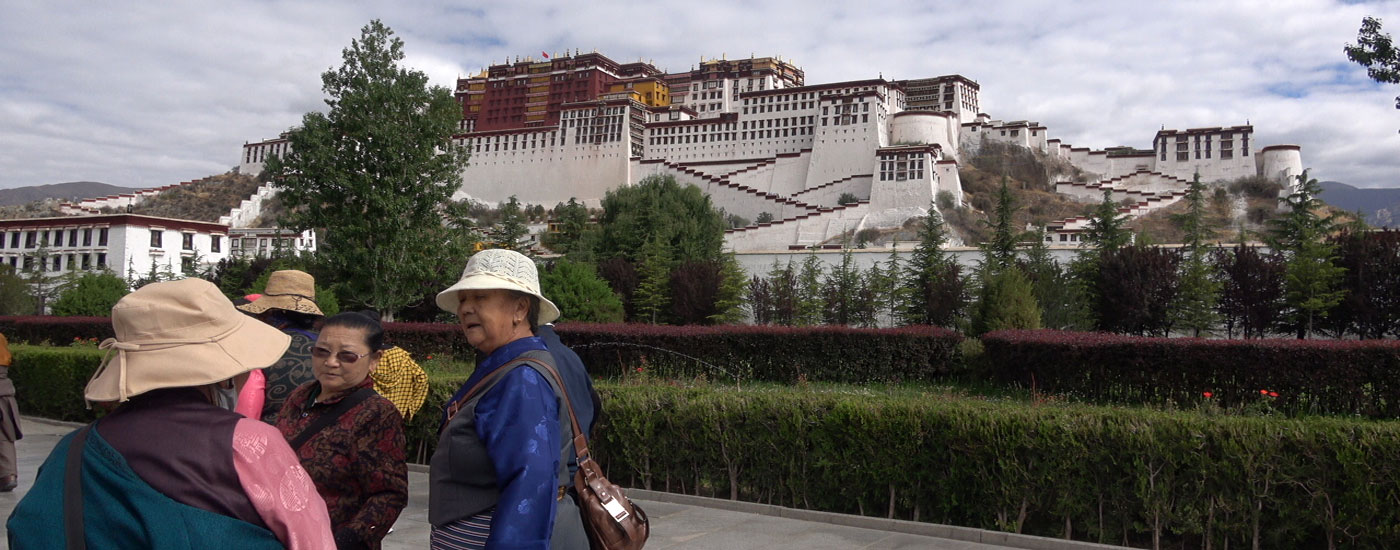
A Kathmandu Lhasa Ali Kailash tour is an alternative route to avoid long road driving distances to Kailash Mansarovar Yatra. It is a newly recognized route and only special Yatri travel through Ali flights from Lhasa. The flight to Ali takes only two hours from Lhasa, which is always crowded and expensive. The airport was built for Chinese military purpose to develop and connect West Tibet. Only after 2010 AD did the airport open for public flight service. Lhasa Ali flights are very dependent on weather and wind pressure.
Depending on the weather, flights can be delayed, canceled or post Lhasa is Tibet's capital, home to a number of ancient Buddhist temples, monasteries, and palaces. Lhasa is 3650 meters high and boasts ancient Potala Palace, Drepung Monastery, Sera Monastery, Jokhang Temple, Norbulunka Palace, among others. There are many ethnic Tibetan groups with unique lifestyles and cultures that will fascinate all visitors. It will take you two full days to see Lhasa's sights and adjust to the high altitude and climate of Tibet. After that, you will drive along the Yarlung Tsangpo River until you reach Yam Dwar, the gateway to Mount Kailash. The Kora for Mount Kailash will take three / four days and for Manasarovar Lake two days. In addition to Buddhists, Hindus, Jains, and Bon Po pilgrims, Mount Kailash is also known as Kangri Rimpoche, a sparkling mass of snow that feeds four major Asian rivers.
Mountain Kailash is a Hindu and Buddhist pilgrimage site that connects you to the Indus, Ganges, Brahmaputra, and Sutlej rivers. Manasarovar Lake (4580m.), also known as Mapam Yumtso, is a sacred lake of consciousness in the Buddhist tradition. In Hindu belief, drinking the lake's water and bathing in it will rid one of all worldly sins and secure one's place in heaven. Manasarovar Lake on the other hand, is considered sacred by Buddhists as the place where Buddha meditated, so seeing it alone is sufficient to bring one to enlightenment. International Flight to Lhasa. Lhasa's Ali (Ngari Gunsa) Airport serves the town of Shaquan (Ali) in Ngari Prefecture of southwest Tibet. With an elevation of 4274 meters, Ali Airport is the fourth highest commercial airport in the world. From Ali Airport, China Airlines operates a flight to Lhasa that takes two hours.
04 August 2025 Day 01: Arrival Kathmandu before 08:00 A.M.
Collect passport, apply visa, Afternoon 2:30 will be Kailash
Manasarovar briefing and evening Aarati in Pashupatinath
05 August 2025 Day 02: Sights Saga, Doleshwor, Boudhanath
06 August 2025 Day 03: Rudrabhishek, Hawan, Aarati, sights in
Gujeswari Sakti pith and Jal Narayan in Budhanilkantha, hotel
07 August 2025 Day 04: Fly to Gonggar airport & drive to Lhasa
08 August 2025 Day 05: Sights in Lhasa includes Potala Palace
09 August 2025 Day 06: Drive to airport fly Ali & drive to Manas
Full moon night in Manasarovar Lake
10 August 2025 Day 07: Hindu rituals, afternoon drive Darchen
11 August 2025 Day 08: Drive to Yam Dwar, start walk Dirapuk
12 August 2025 Day 09: Trek to Dolma La 5636m. & Zuthulpuk
13 August 2025 Day 10: Trek to Chongdo & drive to Ali Airport
14 August 2025 Day 11: Fly to Gonggar airport & transfer hotel
15 August 2025 Day 12 Drive to airport flight back to Kathmandu
16 August 2025 Day 13 Transfer to Kathmandu airport departure
04 August 2025 Day 01: Monterosa Treks and Expedition staff will receive you at Tribhuvan International Airport and escort you to your hotel. It is important for every Yatri to reach Kathmandu 8:00 PM or before. In Kathmandu, we collect the original passport and apply for the Tibet visa at the Chinese embassy. Kailash Manasarovar tour briefing will take place at 2:30 PM in the afternoon. Diamox medicine and a bag will be provided. Aarati Darshan in Pashupatinath as well as Aarati holy dance on the banks of Bagmati river in front of Pasupatinath temple in the evening. We return to the hotel and have a vegetarian buffet dinner.
05 August 2025 Day 02: Kathmandu valley holy sightseeing as follows; Kailashnath Mahadev Statue is the tallest Shiva temple in Nepal. In Bali, Indonesia, it is second tallest Hindu deity after Garuda Wisnu Kencana Statue. Located about 20 kilometers away from Kathmandu, the Kailash Nath Shiva statue is located in Sanga, Nepal. Copper, zinc, cement, and steel were used in the construction of the statue, which stands 144 feet / 44 meters tall.
Visit Doleshwor (Doleshwar): To all Shiva devotees, a trip to Kailash is incomplete without visiting Doleshwar Mahadev and Pasupatinath temples. Doleshwar Mahadev was officially declared head of Kedarnath, one of the Char Dham Yatras, on Aug. 22, 2009. In 2013, after the devastating flood struck Kedarnath's temple, located in Uttarakhand, the regular prayers that were interrupted were conducted at Doleshwar Temple. Kedarnath Temple's head priest requested regular prayers to be held at Doleshwar Mahadev Temple instead of the Kedarnath Temple.
Buddhist Temple in Bouddha: In the 5th century, Boudhanath stupa was built with the wisdom eyes of Gautama Buddha for four cardinal directions, making it the second largest stupa in the world. The Buddha is an important pilgrimage site for Tibetans because of its immense stupa. Prayers and seminars are held nearby at monasteries and schools. Devotees stroll around the white dome and visit the monasteries and schools nearby. There is no doubt that the Buddha Stupa dominates the skyline. Over 50 gompas (Tibetan convents) have been built around Buddha as a result of the influx of Tibetan refugees. UNESCO has listed Boudhanath Stupa as a World Heritage Site since 1979. This is where Kathmandu Valley is credited with its glory.
Visit Gujeswari / Temple of Guhyeshori Shakti Pith. She is the mother of all the Astha Matrilas (Eight Mother Goddesses). In Hinduism and Buddhism, she is worshipped equally. According to the Hindu legend Pauranik Katha. In response to an insult from her husband Shiva, Shiva's first consort SATI DEVI fell into YAGYAAKUND (A religious fire ceremony). Shiva retrieved her, fire burned his corpse senseless by grief, and flew to and from Nepal and the Indian subcontinent. It is believed that SATI DEVI's body is scattered throughout 51 Shakti Piths. Her secret part (GOPYA) vagina, some say her anus fell to this place, which we call Guhyeshori. Additionally, she protects the deities of the Kathmandu valley. We return to the hotel for a vegetarian buffet lunch.
06 August 2025 Day 03: On the morning of Rudra Abhishek, Hawan, and Aarati, Kailash pilgrims are taken to Pasupatinath temple for Rudra Consecration. Brahmin priests prepare for fire offering Hawan in Pavilion (Mandap) and do Sankalpa Pooja in the beginning followed by Swastibachan (Preaching), Nyas, Rudra preaching, and Mahamritunjaya (Death victory) Pooja.
The word 'Rudra', meaning 'Fearful Lord Shiva', derives from Rudrabhishek, Rudranti Iti Rudri, and Rudhiryoge Metal. People on this Earth suffer from pain, violence, greed, and we pray to God Shiva so that he grants them justice, good health, prosperity, peace and salvation. Rudri's mission is to ensure a peaceful world. The pilgrims' first stop during the Kailash tour is Pashupatinath and its worship. The practice of worshiping Lord Pashupatinath and performing Aarati is believed to grant devotees all kinds of good merits. Kailash Tours are considered complete only after a holy visit to Pashupatinath. One of the most important pilgrimage sites is Kailash Manasarovar.
Despite having too many Jyothirlinga and Shiva temples, Kailash is a pilgrimage destination. Humans are superior to souls in this Universe, sages are superior to humans, gods are superior to gods, and Lord Shiva is even superior to gods, Kailash is where the supreme Lord Shiva dwells. Hence, every pilgrimage is incomplete without the Kailash Pilgrimage. Doing Rudra (Shiva's idol) Consecration and fire offering (Hawan) to Lord Pashupatinath is a popular religious tradition to wish for a successful Kailash Tour. Bhatta pujari performs Panchamrit Pooja in Pashupatinath temple every day between 9:30 AM and 11 AM after Rudra Abhishek. The temple has an offering available, but it is a payable Pooja that includes a Pooja Thali, milk, Rudrachhe mala, flower garland, and a lamp. By offering Panchamrit Pooja to Lord Pasupatinath, the devotee fulfills all the desired wishes for the Kailash Manasarovar Yatra / tour. After receiving Prasad and Rudrachhe mala, the ceremony ends. Hindu devotees are the only ones who may perform this, Pooja. The main gates are not open to other religions.
Budhanilkantha: The Budhanilkantha (Jal Narayan) Vishnu Temple, located in Budhanilkantha, Nepal, is an open-air Hindu temple dedicated to Lord Vishnu, around 2:00 PM in the afternoon. At the northern end of the Kathmandu valley, Budhanilkantha Temple is located below Shivapuri Hill and is recognized by its large reclining statue of Lord Vishnu. In Budhanilkantha, a sleeping Vishnu floats on a bed of snakes in a large pool of water depicting the cosmic ocean, like a giant astronaut. The peculiar name refers to two legends attached to the statue, one of which states that a farmer found the long-lost statue while plowing his field, and another stating that Vishnu sacrificed himself by drinking the poison of the cosmic ocean, which turned his throat blue.
07 August 2025 Day 04: In the morning, we take a flight from Tribhuvan International Airport to Gonggar Airport in Tibet. The drive from Gonggar Airport to Lhasa city is 62 km., Overnight in a hotel
08 August 2025 Day 05: A full day of guided sightseeing in Lhasa, including the Potala Place and the local market Bharkhor.
09 August 2025 Day 06: We fly from Gonggar Airport to Ali Airport (4500m.). Then we drive for 3 hours to Manasarovar Lake, covering a distance of 300 km. Full night is where will spend the night. Full moon night in Manasarovar Lake.
10 August 2025 Day 07: Outside of Manasarovar Lake, we choose a special spot for Rudra Abhishek, the chanting of Shiva mantras. Your Hawan and worship will be performed by a Nepali Priest. As a result, the entire environment becomes spiritual and religious. After lunch, drive to Darchen for the night. The starting and ending point of Kailash is from here, along with the well-known Kailash Base Camp.
11 August 2025 Day 08: Walking to Dirapuk (4860m.) from Yam Dwar, the starting point of Kailash Parikrama (Circumambulation). Kailash Parikrama covers 53km in total. Upon reaching Darchen, we can either walk or hire a pony or horse for 38 kilometers. In order to cover the remaining distance, a blue bus will be used that is environmentally friendly. Between Yam Dwar and Dirapuk, there is a distance of 12km.
12 August 2025 Day 09: Today will be a longest walking day as we need to reach Zuthulpuk from Dirapuk 22KM. Climbing from Dirapuk we reach the Shivasthal, Ganesh Kund and finally the top of Dolma La Pass (5636m.), which is the highest point of our journey. The walking time from Dirapuk to Zuthulpuk is 7- 8 hours. We will then walk down and reach Shapje Datok then further to Zuthulpuk following Lham Chu River.
13 August 2025 Day 10: Morning waling to Chongdo and drive to Darchen, take Lunch drive Ali airport, overnight stay in Ali airport.
14 August 2025 Day 11: Flight from Ali Airport to Gonggar airport in Tibet and drive to Lhasa. spend our night at Lhasa town.
15 August 2025 Day 12: Fly to Kathmandu after having our breakfast at hotel. We spend our night in the hotel at Kathmandu.
16 August 2025 Day 13: This is the last day of our tour and there will be farewell to our dear guests. Then, you will be transferred to Tribhuvan International airport Kathmandu for returning back to their home country.
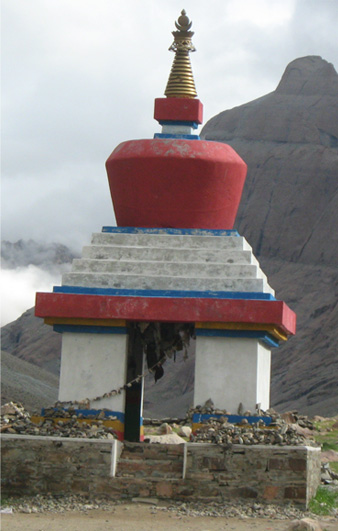 Per Person USD 6500 (Double / Twin room Sharing)
Per Person USD 6500 (Double / Twin room Sharing)
Per Person USD 7000 (Single room using)
Extra cost if required for Kailash Circuit:
Horse ride during the Parikrama 1 horse for 3 days USD 385
(Directly payable to the Tibetan guide)
Porter for carrying small bag for 3 days round Kailash USD 165
Hotel in Nepal
Kathmandu: 5 Star Deluxe hotel Radisson or similar
Hotel in Tibet
Lhasa Tibet: 5 Star Shangri - La or Similar
Manasarovar Lake: Normal Guest house
Darchen: 4 star Himalayan Kailash Hotel
Dirapuk: Normal Guesthouse (Parikrama first day)
Zuthulpuk: Normal guesthouse (Parikrama second day
Note: 3 nights in 3 places like Manasarovar Lake, first day of Kora - Dirapuk and second day of Kora - Zuthulpuk will be dromedary bedroom and very basic toilets available.
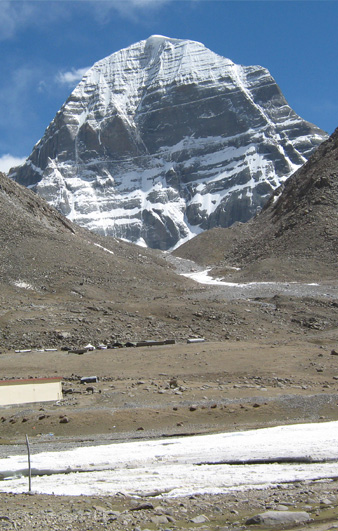 Arrival Kathmandu airport and transfer to hotel overnight
Arrival Kathmandu airport and transfer to hotel overnight 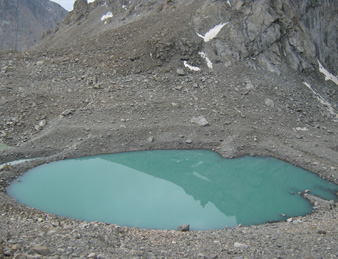 Extra night hotel cost in Kathmandu, Nepal
Extra night hotel cost in Kathmandu, Nepal  Back pack for 3 days Kailash Parikrama / Kora
Back pack for 3 days Kailash Parikrama / Kora 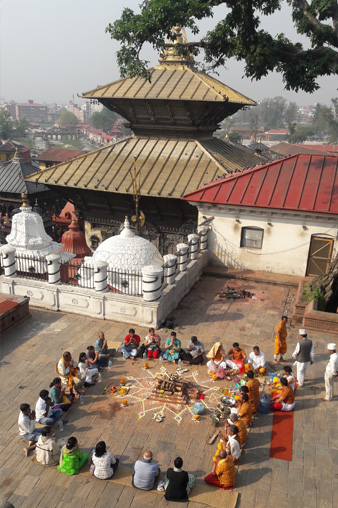 Oxygen is less at higher altitudes. The inclement weather and high altitude induces certain illness generally not encountered over the plains. Headache, nausea, lassitude, lethargy, breathlessness, general uneasiness [malaise], high irritability, light loss of balance, disorientation, incoherence and insomnia are a few. It is common to all irrespective of the age, sex and physical fitness. Gradual acclimatization is the best answer. Tranquilizers, sleeping dose and strong anti-biotic must be avoided. Some of symptoms indicate that the body mechanism is readjusting to new environments. The best idea is deliberately slow down all the activities and follows the guidelines below:
Oxygen is less at higher altitudes. The inclement weather and high altitude induces certain illness generally not encountered over the plains. Headache, nausea, lassitude, lethargy, breathlessness, general uneasiness [malaise], high irritability, light loss of balance, disorientation, incoherence and insomnia are a few. It is common to all irrespective of the age, sex and physical fitness. Gradual acclimatization is the best answer. Tranquilizers, sleeping dose and strong anti-biotic must be avoided. Some of symptoms indicate that the body mechanism is readjusting to new environments. The best idea is deliberately slow down all the activities and follows the guidelines below:
Om Namo Shivaya ! Jaya Bhole Nath !! Har Har Mahadev!!!
What our client's says about Kailash yatra and tour operator